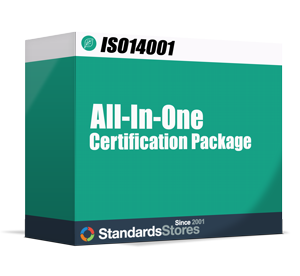Organizational roles, responsibilities, and authorities
Section 5.3 of the ISO 14001:2015 requirements addresses the organizational roles, responsibilities, and authorities. The requirement states that top management must ensure that all responsibilities and authorities for admissible roles are appointed and communicated within an organization. Furthermore, the top management holds responsibility for assuring the EMS complies to the standard, and that responsibility is appointed for reporting results to the top management.
Section 5.3 requirements may seem candid, but they can greatly vary from organization to organization depending on scope, size, and sector the organization operates in. When you are establishing these requirements within your organization, top management shall assign responsibility to:
Assuring the EMS meets the requirements of the ISO 14001:2015 standard: Your organization can accomplish this by selecting an employee with the necessary qualifications and knowledge.
- Reporting on the performance of the EMS to top management: This task may be assigned to one competent employee, or maybe better assigned to a team.
Top management needs to ensure that the responsibilities and authorities for relevant roles are assigned and communicated within the organization. Top management needs to assign the responsibility and authority for ensuring that the environmental management system conforms to the requirements of this International Standard, including the reporting on the performance of the environmental management system. Top management should assign responsibilities and authorities to ensure the EMS is maintained. The organization’s documented information should define individual responsibility and authority for maintaining the EMS.
Examples include responsibility for reporting the performance of the EMS, authority for communicating with regulatory bodies and the public, releasing hazardous waste manifests, and approving reports to regulatory bodies.The successful implementation of an environmental management system calls for commitment from all employees in the organization. The purpose of this sub-clause is to ensure that that personnel are assigned responsibilities for part of the environmental management system and have a clear-cut reporting structure. Job descriptions, or project responsibilities from the management programme, may cover this requirement. For your EMS to be effective, roles and responsibilities must be clearly defined and communicated. In a small organization, the commitment of all employees is needed.
What’s changed from ISO 14001:2004? ISO 14001:2015 does not use the title “Management Representative” as previous ISO 14001 standards did. The organization can continue to use “Management Representative” as the title has certain responsibilities, but the intent of ISO 14001:2015 is to emphasize top management’s responsibilities as more than delegating. Some of these responsibilities are:
- ensures that the EMS is established and implemented
- reports on its performance over time; and
- works with others to modify the EMS when necessary.
This responsibility can either taken by the same person who serves as the project champion, but this is not mandatory.There needs to be a direct authority linkage. For example, in the case of a potential environmental problem, the line of communication to senior management needs to be short so that action can occur readily. Commitment begins, of course, at the top level of management, but it is accepted that in larger organizations responsibility is often delegated to a less senior individual. Management can use information on EMS performance to improve the system over time.


